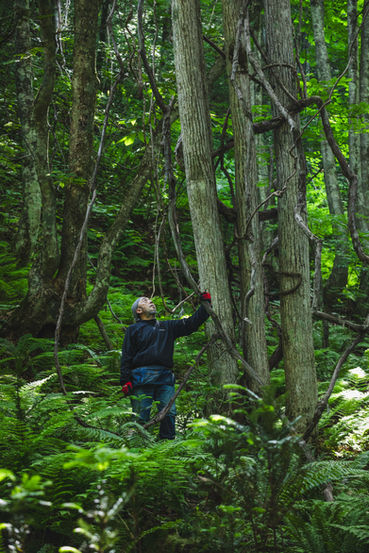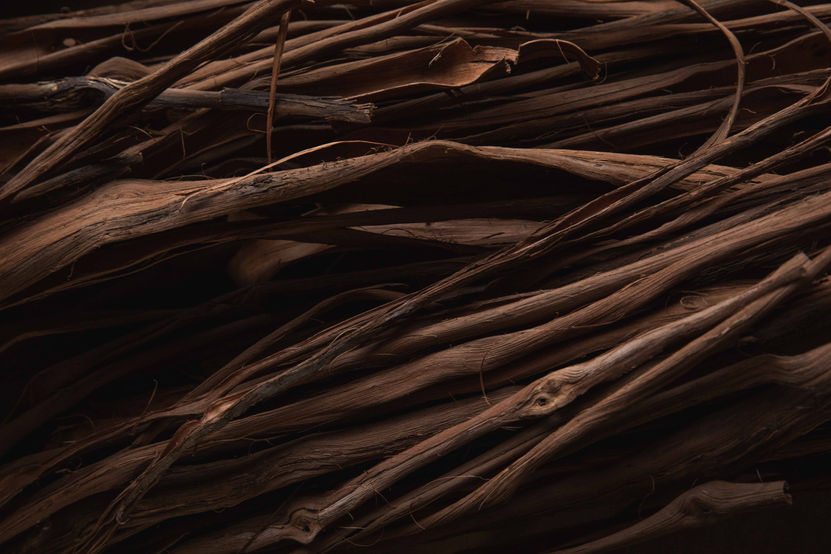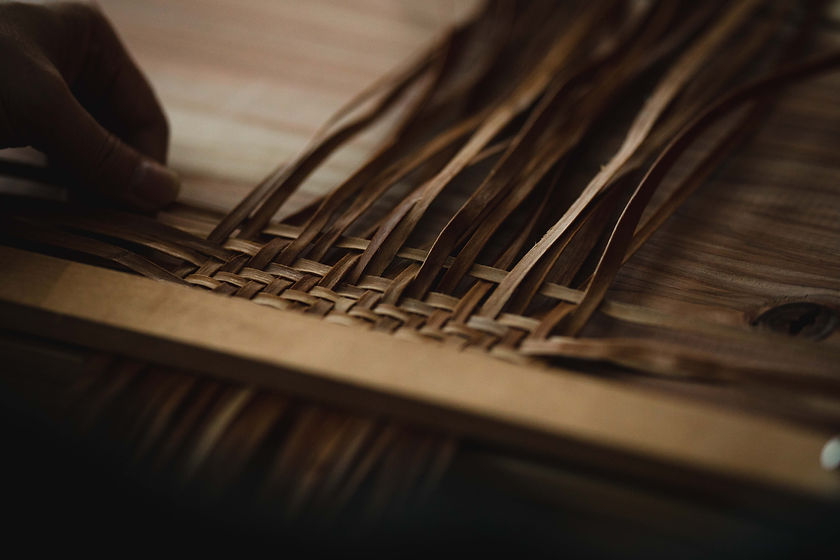
04
技術について
Craftsmanship
編みの技術
過去と未来を編む
Connect the Past and the Future
複数のヒゴを編み上げ、ひとつの形を創る。編みで表現できるデザインは数百種類を越え、その技術はバッグや財布、家具をはじめとしたインテリアなど日常の中で広く活用されています。わたしたちはこの古くから伝わる技術を継承し、現代とこれからのニーズに活かせるものづくりができるよう、常に技術と技法について探求を続け、様々なアイデアを取り入れてまた新たな可能性を生み出します。それはまるで過去と未来を編むように。

01
About Craftsmanship
Weaving Technology
編みの技術と歴史
We are striving to revive and utilize ancient technology in the modern age.
約5500年前に生まれていた技術
5,500 years of craftsmanship
編みの技術はその歴史を辿ると、ヒトがまだ狩猟や漁労、木の実などを採取して日々の糧を得ていた縄文時代にまで遡ります。
人々は樹皮などを縦横に組んだ『網代編み』という技法を生み出してポシェットを作り、食糧となる木の実を入れて生活道具として使用していたようです。
その後も変わらず編み籠は作られ続け、常に人々の生活の中にありました。
遥か昔に生まれた技術は、今もなお同様の製法で作られ使われ続けています。

失われつつある手編み文化
Improvement of the craft
様々な職人により工夫と発展を続けた編み模様の種類は数百を超えるほどになり、様々な編み表現が生み出されてきました。
しかしながら、編みの技術の簡素化や職人の高齢化、文化をつなぐ担い手の不足により現代においては大変貴重なものとなっています。

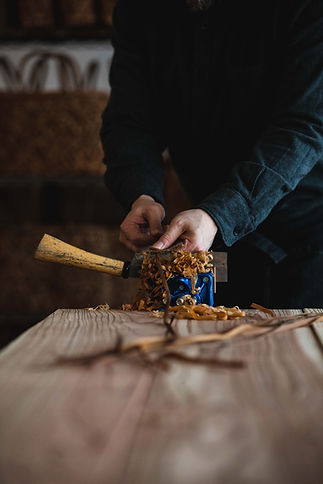
02
About Craftsmanship
Manufacturing Process
籠ができるまで
We are constantly exploring the tradition with new possibilities to create products.
山葡萄の採取
Collect the wild grape vines
梅雨の時期が終わる頃、奥山という人里離れた山中で逞しく自生する蔓を採取します。採取する蔓の大きさ(直径)には一定の基準を設け、基準値に満たない蔓はむやみに採取せず、翌年以降に先延ばすことで種を枯渇させない工夫や、伐採した以上の植林を行いながら天然の恵を分けてもらいます。

ヒゴづくり
Processe into sets of even thickness.
まっすぐなもの、曲がったもの、捻れたもの。天然素材の山葡萄の蔓には、一本一本に性格があり、柔らかくしなやかにするための鞣し(なめし)と削りの加工作業を経て均等な太さと厚みに切り揃えたヒゴを作ります。
この工程はカゴ作りにおける最も重要な工程であり、完成の出来を大きく左右する、職人の技術が問われる工程でもあります。

編み上げ
Weave
加工したヒゴを縦横に交錯させて籠の底部から編み、木型に巻き付けながら丁寧に隙間を埋めて編み上げます。乾燥させたヒゴを水に漬けて柔らかくし、編んではまた乾燥させて。この工程を何度も繰り返して少しずつ作業を進めるのでひとつの籠を編みあげるまでに多くの時間を必要としますが、ひとつひとつの籠を丁寧に、丈夫で永く愛される山葡萄籠を製作しています。

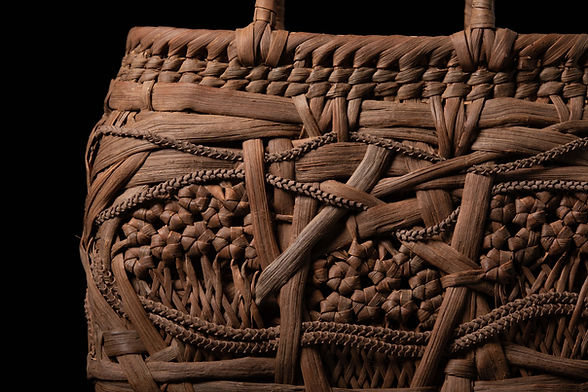
03
About Craftsmanship
Gallery
ギャラリー
We are constantly exploring the tradition with new possibilities to create products.
ギャラリー

Gallery
Yama-Bikoでは受継ぎ、培ってきた技術を活かして様々な作品を製作しています。

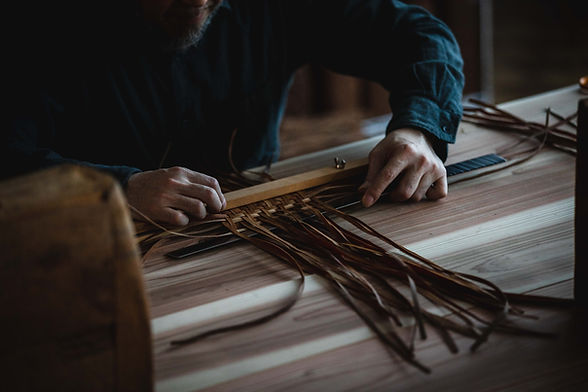
04
About Craftsmanship
Our Craftsmanship
技術を継ぐ、つなぐ
We are striving to revive and utilize ancient technology in the modern age.
受け継いだ文化を繋いでいく
Passing down the tradition
私たちが受け継いだ編みの技術は日本人の知恵と工夫により生まれた財産。絶やすとなくこれから先にも繋いでいくべきものと考えています。
私たちYama-Bikoは、受け継いできた技術やノウハウを次世代に伝えるため、職人や編み籠講師の育成、手編みかご教室の開催などを通じて、編み籠の普及に努めています。ご興味のある方はお気軽にお声がけください。

